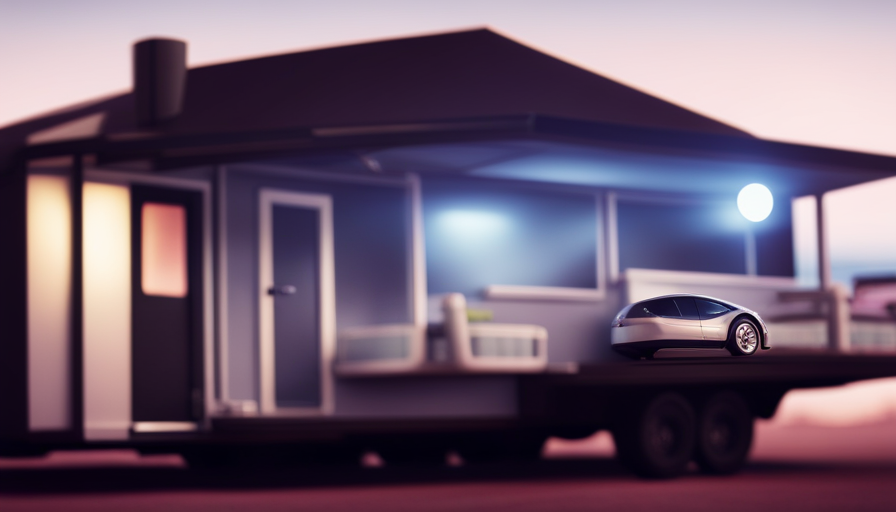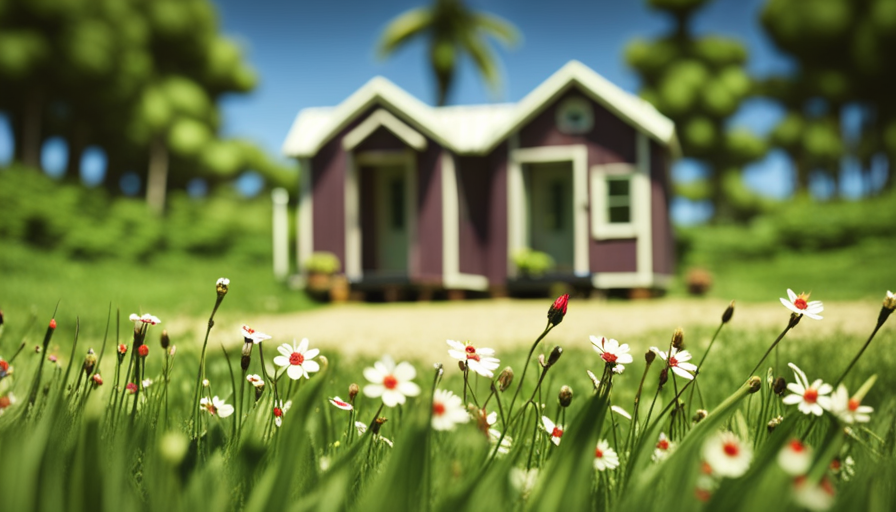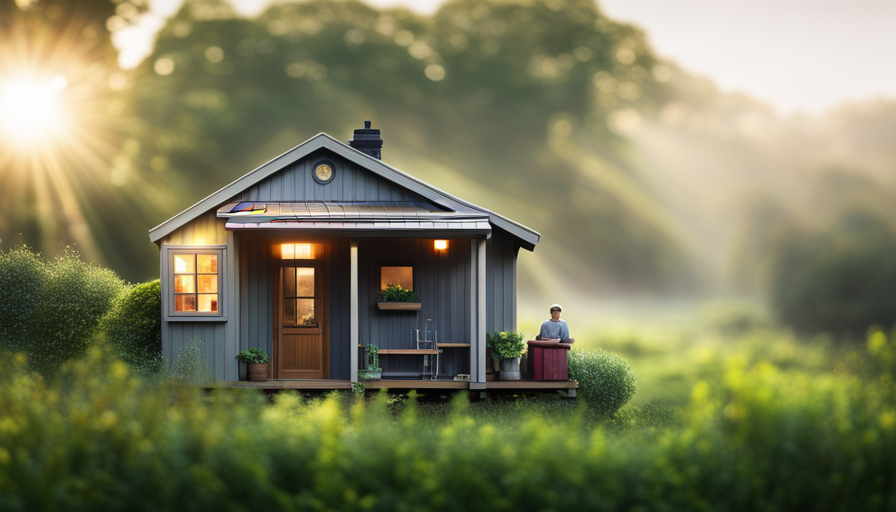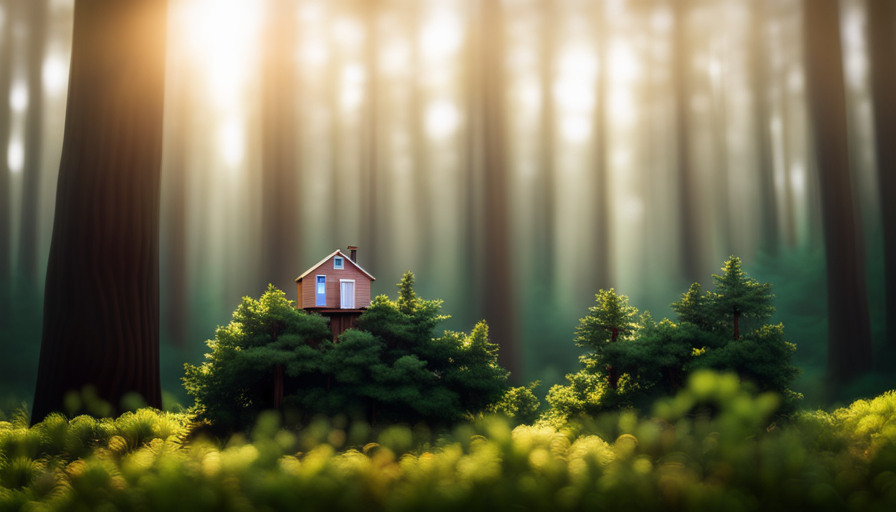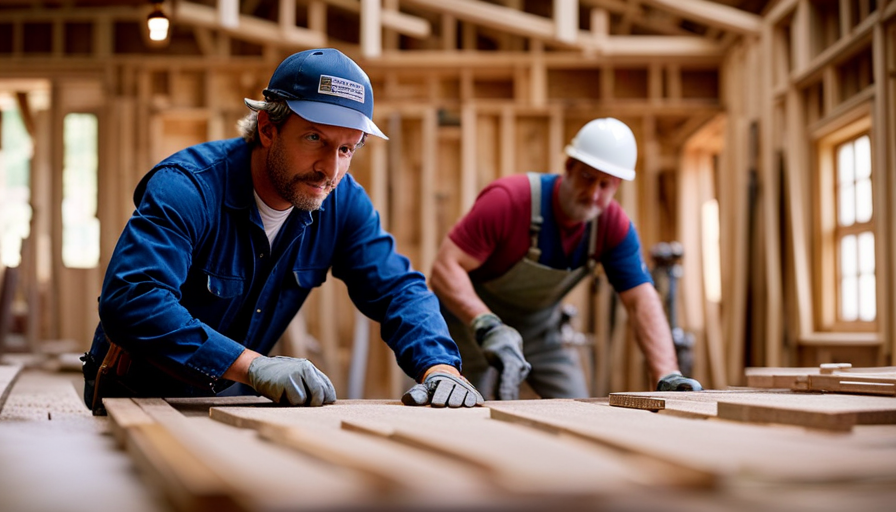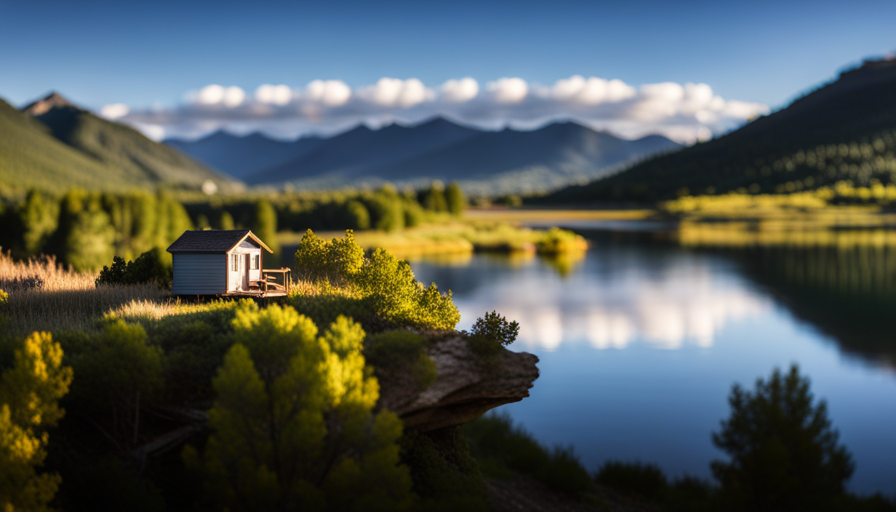You may wonder, ‘What’s the point of purchasing a small home from Elon Musk?’ I’m here to explain why it’s definitely worth considering.
In this article, I will guide you through the process of purchasing one of Elon Musk’s innovative tiny houses and explain the benefits of choosing this unique living arrangement.
Now, I understand that some of you may be skeptical about the idea of living in a tiny house. But trust me, there are countless advantages to downsizing your living space. Not only will you save money on utilities and maintenance, but you’ll also have the opportunity to embrace a more sustainable and eco-friendly lifestyle.
In this article, we will explore the various designs and layouts of Elon Musk’s tiny houses, discuss the eco-friendly features they offer, and provide you with tips on how to finance your investment.
So, if you’re ready to embark on a new adventure and embrace the tiny house movement, let’s dive in and discover how you can purchase your very own Elon Musk tiny house.
Key Takeaways
- Elon Musk’s tiny houses offer innovative designs and eco-friendly features.
- Downsizing to a tiny house can save money and promote sustainability.
- Elon Musk’s tiny houses are made with sustainable materials and have energy-efficient systems.
- There are various sizes, layouts, and decor options available to choose from for your needs.
The Benefits of Tiny Houses
Living in a tiny house offers the freedom to simplify your life and enjoy a cozy, intimate space where every corner is filled with warmth and charm. The psychology of minimalist living is fascinating, as it allows individuals to declutter their physical environment and, in turn, declutter their minds.
The impact of tiny houses on mental health cannot be overstated. When we live in smaller spaces, we are forced to prioritize what truly matters to us, eliminating distractions and unnecessary possessions. This intentional living allows us to focus on the present moment and cultivate a sense of gratitude for the simple joys in life.
Exploring Elon Musk’s innovative designs takes this concept to new heights, blending practicality with cutting-edge technology. It’s an exciting journey into the future of compact, sustainable living.
Exploring Elon Musk’s Innovative Designs
Discovering Elon Musk’s groundbreaking architectural concepts will leave you awe-inspired and eager to explore their innovative designs. Elon Musk’s architectural vision for the future of sustainable housing is truly remarkable. His designs combine functionality, aesthetics, and sustainability in a way that has never been seen before.
From solar panels integrated into the roof to advanced insulation materials, Musk’s tiny houses are a testament to his commitment to creating a greener and more efficient world. These designs not only provide a solution to the housing crisis but also offer a glimpse into the potential of sustainable living.
As we delve deeper into the world of Elon Musk’s tiny houses, we’ll explore the various sizes and layouts available, helping you choose the right one to suit your needs seamlessly.
Choosing the Right Size and Layout for Your Needs
When it comes to finding the perfect size and layout for your needs, you’ll want to consider factors like the number of rooms and the overall square footage. Choosing the right style and decor for your tiny house is crucial in creating a space that reflects your personality and makes you feel at home.
Whether you prefer a minimalist or cozy aesthetic, Elon Musk’s tiny houses offer a variety of design options to suit your taste. Additionally, maximizing storage space in a small footprint is essential in tiny house living. With clever storage solutions like built-in shelving, hidden compartments, and multi-functional furniture, you can make the most of every inch.
By carefully choosing the right size, layout, and decor, you can create a tiny house that perfectly meets your needs and preferences. Understanding the eco-friendly features of Elon Musk’s tiny houses will further enhance your living experience.
Understanding the Eco-Friendly Features of Elon Musk’s Tiny Houses
One of the key benefits of Elon Musk’s tiny houses is their eco-friendly features, which make them an environmentally conscious choice for those seeking a sustainable living option.
These tiny houses are built using eco-friendly materials that minimize their impact on the environment. From the foundation to the roof, sustainable materials such as reclaimed wood, recycled metals, and low VOC paints are used.
Additionally, these houses are equipped with energy-efficient systems that reduce energy consumption and lower utility bills. Solar panels and energy-efficient appliances are incorporated to maximize energy savings. The use of natural lighting and insulation further enhances energy efficiency.
By choosing an Elon Musk tiny house, individuals can not only reduce their carbon footprint but also enjoy the benefits of lower energy costs.
Now, let’s explore how to purchase an Elon Musk tiny house without breaking the bank.
How to Purchase an Elon Musk Tiny House
If you’re looking to bring sustainable living into your world, there’s a way to make Elon Musk’s innovative eco-friendly abodes yours.
The purchasing process for an Elon Musk tiny house is straightforward and convenient. To begin, visit the official website of Tesla, the company spearheading the project. There, you can explore the different pricing options available for these tiny houses. Prices vary depending on the size and features you choose.
Once you’ve selected the perfect tiny house for your needs, you can proceed with the purchase. Tesla provides a seamless online ordering system, allowing you to customize your tiny house and securely complete the transaction. With the click of a button, you’ll be one step closer to sustainable living.
Speaking of steps, let’s now delve into the financing options for your tiny house investment.
Financing Options for Your Tiny House Investment
To make sustainable living a reality, explore the financing options available for your investment in a Tesla tiny house. When it comes to financing your tiny house, there are several options to consider.
Here are five popular choices:
-
Personal Savings: Using your own savings is a straightforward and cost-effective option.
-
Traditional Loans: Many banks and credit unions offer loans specifically for tiny houses.
-
RV Loans: If your tiny house is on wheels, you may qualify for an RV loan.
-
Peer-to-Peer Lending: Platforms like LendingClub and Prosper allow individuals to invest in your tiny house project.
-
Home Equity Line of Credit (HELOC): If you own a home, you can use the equity to finance your tiny house.
By exploring these tiny house financing options, you can find the best solution for your needs.
Now, let’s move on to tips for making the most of your new compact living space.
Tips for Making the Most of Your New Compact Living Space
Living in a tiny space can be a challenge, but with these tips, you’ll be able to maximize your compact living area and create a comfortable home.
One of the key aspects of living in a tiny house is maximizing storage. Utilize every nook and cranny by investing in storage solutions such as under-bed storage containers, hanging shelves, and collapsible furniture. Get creative and think vertically to make the most of wall space.
Another tip is to create multifunctional spaces. Choose furniture that serves multiple purposes, like a sofa that can turn into a bed or a coffee table with built-in storage. Consider using room dividers or curtains to delineate different areas within your tiny home.
By following these tips, you can transform your tiny space into a functional and stylish living area.
Frequently Asked Questions
Do Elon Musk’s tiny houses come fully furnished?
No, Elon Musk’s tiny houses don’t come fully furnished. They are sold as bare-bones structures, allowing buyers to personalize and furnish them according to their own preferences. However, appliances are included in the purchase, making the houses functional and ready for use.
The price range for Elon Musk’s tiny houses varies depending on the model and specifications, starting from around $50,000 and going up to $100,000 or more.
Are Elon Musk’s tiny houses mobile or stationary?
Elon Musk’s tiny houses are mobile, offering the flexibility to move them wherever you desire. Living in a tiny house has numerous advantages, such as reduced costs, lower environmental impact, and simplified living.
The mobility of these houses allows you to explore different locations and experience a minimalist lifestyle on the go. Whether you prefer a stationary or mobile lifestyle, Elon Musk’s tiny houses provide an opportunity to embrace the benefits of living small.
Can I customize the design of an Elon Musk tiny house?
Yes, you can customize the design of an Elon Musk tiny house. There are several customization options available, allowing you to create a space that suits your personal taste and needs. You have the freedom to choose the layout and materials, as well as select interior design elements. With these customization options, you can make it your own and create a tiny house that reflects your unique style and preferences.
Are there any maintenance costs associated with owning an Elon Musk tiny house?
Yes, there are maintenance costs associated with owning an Elon Musk tiny house. As an owner, I would need to budget for regular upkeep, such as repairs, cleaning, and general maintenance.
These expenses are part of the overall ownership expenses. It’s important to factor these costs into the budget when considering purchasing an Elon Musk tiny house to ensure that you can properly maintain and care for your investment.
Are there any restrictions on where I can place an Elon Musk tiny house?
When it comes to placing an Elon Musk tiny house, there are some restrictions to consider. You’ll need to comply with zoning regulations, which vary depending on your location. These regulations dictate where you can place your tiny house, taking into account factors such as lot size, setbacks, and utilities.
It’s important to research and understand these restrictions before making any decisions. By being aware of the limitations, you can ensure a smooth and legal placement for your Elon Musk tiny house.
Conclusion
In conclusion, Elon Musk’s tiny houses offer a unique and sustainable housing solution for those looking to downsize and reduce their carbon footprint. With their innovative designs and eco-friendly features, these compact dwellings provide the perfect balance of functionality and style.
And here’s an interesting statistic: Did you know that the average American home is around 2,600 square feet, while Elon Musk’s tiny houses are only around 400 square feet? This visual representation highlights the significant reduction in space and resources that can be achieved through embracing a minimalist lifestyle.
So why not join the tiny house movement and start living large in a smaller space?
Hi, I’m Emma. I’m the Editor in Chief of Tiny House 43, a blog all about tiny houses. While tree houses are often associated with childhood, they can be the perfect adult retreat. They offer a cozy space to relax and unwind, surrounded by nature. And since they’re typically built on stilts or raised platforms, they offer stunning views that traditional homes simply can’t match. If you’re looking for a unique and romantic getaway, a tree house tiny house might just be the perfect option.
